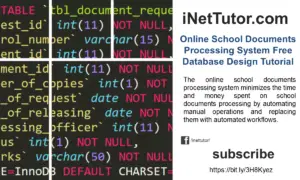MySQL Database – Introduction
MySQL is a relational database management system (RDBMS) that uses Structured Query Language (SQL) . MySQL RDBMS is an open source application which means it is free to use under the GNU General Public License.
Structured Query Language (SQL) – the most common language for relational system, used to insert, update, delete and retrieve content in the database.
Example applications which uses MySQL: Joomla, Drupal, WordPress,phpBB, Magento, Moodle.
SQL Commands Categories
Data Definition Language (DDL) – DDL consists of commands that specify the database scheme. It is also used to create and destroy databases and database objects.
Example of DDL commands: CREATE, DROP, ALTER
Data Manipulation Language (DML) – DML is used to add new records, update records, delete records and retrieve records. It enables you to access and manipulate data in the database.
Example of DML commands: SELECT, INSERT, UPDATE, DELETE
Data Control Language (DCL) – DCL consists of commands to create user privileges and control access to data
Example of DCL commands: GRANT, REVOKE
Understanding Tables, Records, and Fields
Every database is composed of one or more tables. Tables are the foundation of every Relational Database Management System and one of those is MySQL.
Table – A set of data arranged in columns and rows. The columns represent characteristics of stored data and the rows represent actual data entries.
Table columns describe the data types and particular attribute of the data.
Table rows contain the actual data.
